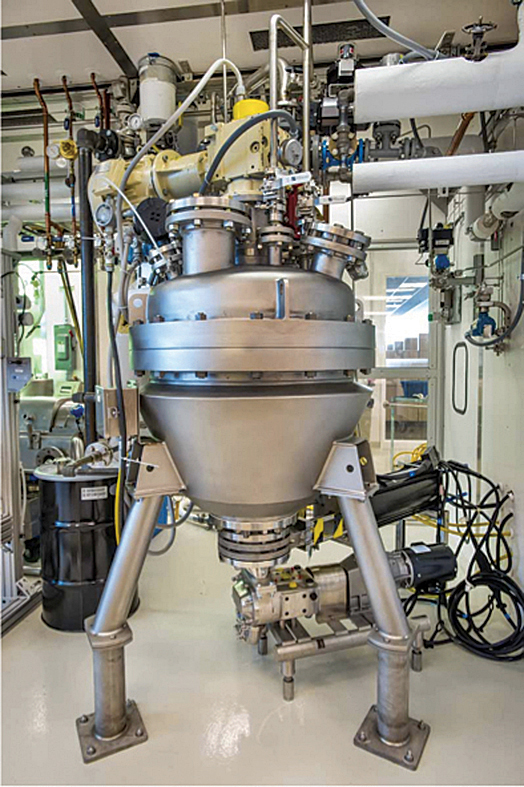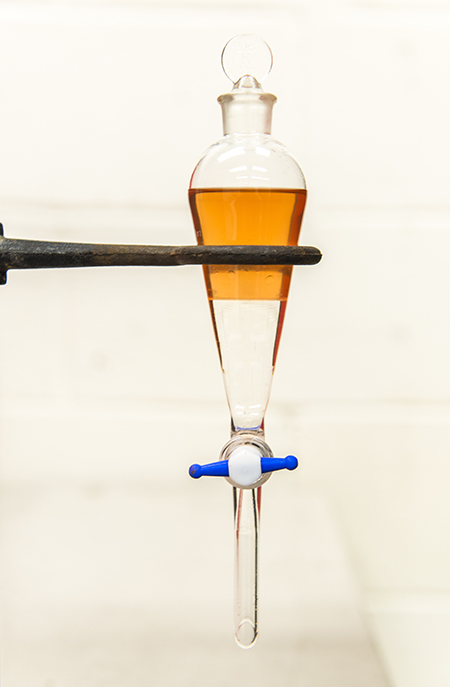Ionic Liquids Create More Sustainable Processes
In an article in Chemical Engineering, Blake Simmons (Senior Manager of Sandia’s Advanced Biomanufacturing Group and JBEI’s Chief Science & Technology Officer) talks about how the Joint BioEnergy Institute (JBEI) has scaled up biomass pretreatment technologies using ionic liquids (salts in a liquid state at ambient conditions) from the bench scale to the 100 L scale using a reactor located at the Advanced Biofuels Processing and Demonstration Unit (ABPDU).
JBEI has scaled up biomass pretreatment technologies that use ionic liquids from the bench scale to the 100 L scale using a reactor located at the Advanced Biofuels Process Demonstration Unit (ABPDU).
JBEI previously created a single-vessel process combining pretreatment and saccharification, decreasing required water input and waste generation. Progressively larger demonstrations position this technology as an economical alternative to other commercial pretreatment methods. Now, in collaboration with the ABPDU, JBEI has turned its focus to scale-up, demonstrating ionic-liquid-based pretreatment at the 100 L scale (right).
“We are very confident that in the near-term, say two to three years, we will be able to generate an ionic liquid conversion technology that can compete on a cost basis and outperform current technologies,” says Simmons. The industry has taken notice of this work, as Simmons cites several companies that are funding collaborative projects across many applications, including fuels, chemicals, and materials.
Ionic liquids (paired-ion salts that are liquid at room temperature) show great promise for liberating fermentable sugars from lignocellulose and improving advanced-biofuel economics.
One key to optimizing the process is narrowing down the best ionic liquid for the job. According to JBEI, among the thousands of known ionic liquids, less than 50 have been shown to be effective for biomass pretreatment. “The selection of the anion and cation dictates how they interact with the principal components in biomass: lignin, cellulose, and hemicellulose,” explained Simmons.
Ionic liquids can be tailored for specific process requirements to selectively interact with biomass components, resulting in the perturbation of the plant cell-wall structure. JBEI has found that imidazolium-based ionic liquids are particularly suitable for disrupting the plant wall and interacting with the various biomass components, making them an effective choice for treating a large variety of biomass feedstocks. “You can equate this to how other solvents can selectively solubilize a wide range of polymers,” says Simmons, “after all, lignin, cellulose, and hemicellulose are simply polymers that are produced by nature.”


